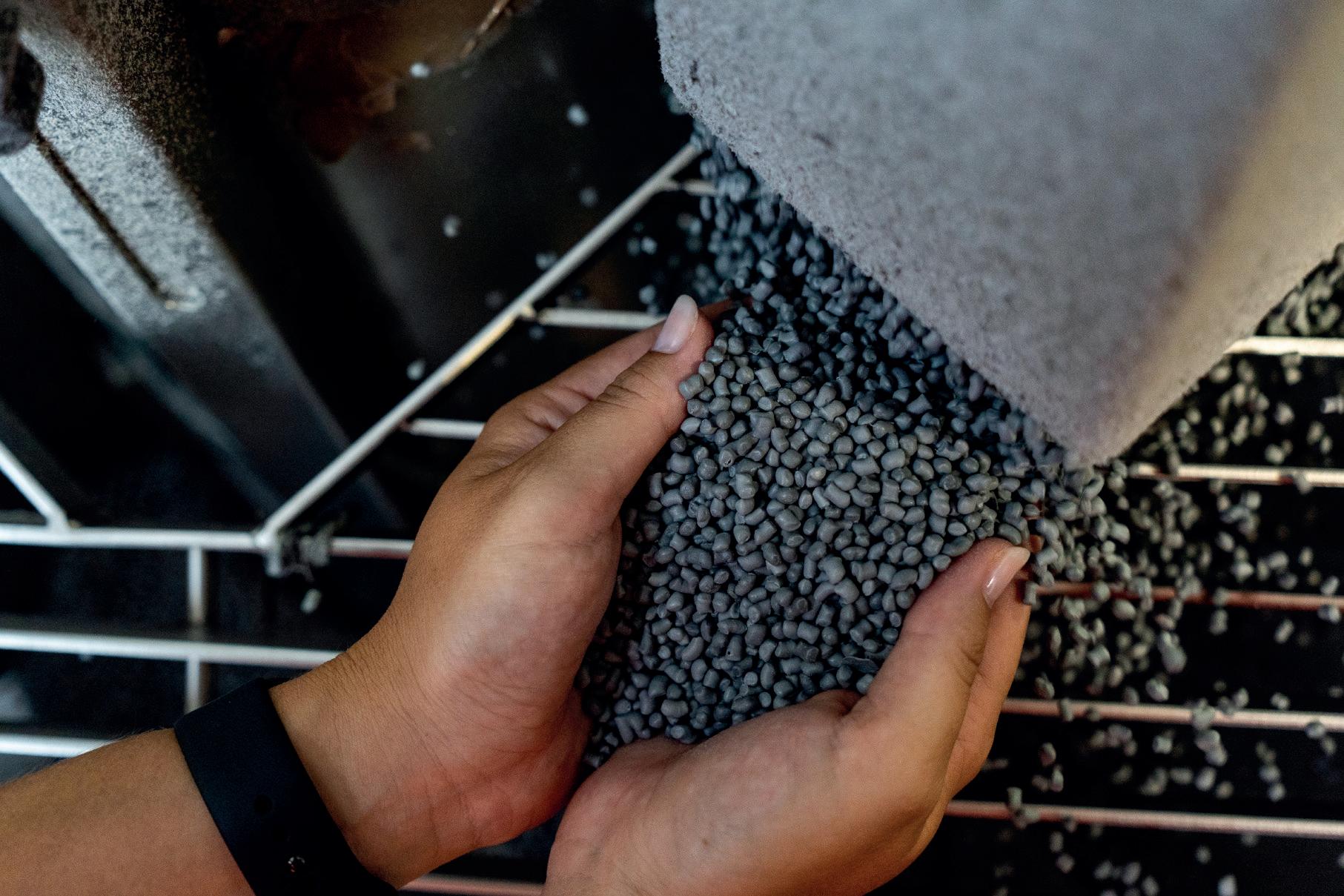

PROPOSAL THE
MAIRE group has developed through its company NEXTCHEM an innovative and sustainable solution, from the environmental, social and economic point of view, for waste valorization: the Green Circular District Model. The Model consists of an integrated platform of green chemistry technologies, including:

Upcycling, which is a top-quality mechanical recycling of plastic waste chemical conversion of non-recyclable plastic and dry waste production of green hydrogen via electrolysis
NEXTCHEM's Circular District Model is particularly suitable for the green conversion of traditional industrial sites based on fossil fuel sources, which can be replaced by feedstock derived from renewable and circular sources, allowing the production of low-carbon chemicals needed by industry. NEXTCHEM has in its portfolio different technologies for emissions reduction and for CO2 capture and reuse.
The Model contributes to the ecological transition starting from industrial areas, reconverting brownfield, disused, or decommissioned sites without further land consumption, and redeploying available technical skills in these places.
Increasing recycling rate. Reduction of incineration and landfilling.
Replacement of fossil feedstock with consequent reduction of CO2 emissions.
Reduction of imports and foreign dependence for industrially strategic chemicals.
Contributes to decarbonization and green conversion of brownfield industrial sites.
WASTE TO CHEMICALS
TECHNOLOGY
WASTE TO CHEMICALS
TECHNOLOGY’S PRODUCTS
Waste that cannot be mechanically recycled, for example non-recyclable waste coming from municipal separate collection and treatment and Refuse Derived Fuel (RDF), can be treated with Waste to Chemicals, the chemical conversion technology developed by MyRechemical, NEXTCHEM's company.
The carbon and hydrogen contained in the waste are converted through a "partial oxidation" process, which uses the waste itself as the energy source and pure oxygen as the oxidizing agent.
The conversion stage is followed by a subsequent purification phase, which does not pollute the atmosphere. The resulting gas is “circular” as it comes from post-consumer materials that would normally end up in landfills or incineration.
About 85% of the input material is converted into synthesis gas, the remaining 15% is an inert granulate. The inert granulate can be used in the ceramic and construction industries for the manufacture of tiles, bricks, cement, and blasting material.
Non-recyclable plastic, dry waste and



Refuse Derived Fuel (RDF) Partial oxidation






























Waste to Chemicals technology produces a Circular Gas that can be used as it is, in hard-to-abate industries such as steel production, as a replacement for synthesis gas produced from methane or coal derivatives (such as carbon dust), reducing the climate-changing emissions generated and at a lower cost.
CIRCULAR GAS
C2H5OH
Manufacture
bricks/cement
REPLACEMENT OF NATURAL GAS IN INDUSTRIAL PROCESSES
CH3OH
CIRCULAR HYDROGEN
Hydrogen can be used in low-carbon industrial processes and for the production of fuels for sustainable mobility with a competitive cost, in compliance with the definitions of the European taxonomy.
Circular Gas can also be used as the basis for the production of Circular Hydrogen, circular methanol, or circular ethanol, or several key chemical products for industry. Circular methanol and ethanol are regulated by the European Renewable Energy Directive (RED). H2
CIRCULAR ETHANOL
Ethanol is used for the production of liquid biofuel for road mobility and Sustainable Aviation Fuel (SAF). Given its antiseptic property, it is the basis of the composition of disinfectant gel.
CIRCULAR METHANOL
Methanol is a key product in the chemical industry. It can be used in the production of formaldehyde and in the furniture industry, and in acetic acid, ethylene and propylene, and low-carbon marine fuels.
GREEN HYDROGEN
PRODUCTION
Electrolysis is the third component of the Green Circular District Model and is a technology for the production of green hydrogen from water and renewable energy sources. Adding a renewable electrolyzer to produce hydrogen through electrolysis would further reduce the carbon footprint of Waste to Chemicals. Electrolysis is a process for converting electrical energy into chemical energy: through an electrochemical process, electrical energy is applied by conversion of the water molecule (H2O) into H2 and O2.
MYREPLAST UPCYCLING TECHNOLOGY
The proprietary MyReplast Upcycling technology is installed at the MyReplast Industries plant in Bedizzole, Italy. MyReplast Industries is a subsidiary of NEXTCHEM. With this technology it is possible to mechanically recycle post-consumer plastic waste and obtain, by subsequent chemical treatment, high added value recycled polymers. The process involves an initial selection by polymer and color, which is followed by volumetric reduction from which flakes are obtained.
In the subsequent chemical compounding treatment, the flakes are extruded together with additives, from thereby producing granules. MyReplast products, obtained by Upcycling, have chemical and physical characteristics similar to those of virgin plastics.


The recycling efficiency of Upcycling is very high (95%) the 5% of waste obtained can still be recovered through Waste to Chemicals technology. MyReplast products are certified EuCertPlast and Plastica Seconda Vita (Second Life Plastic from separate collection and from industrial waste).

MAIRE (Maire Tecnimont S.p.A.), a company listed on the Milan Stock Exchange, leads an engineering group that develops and implements innovative technologies in nitrogen, hydrogen and circular carbon, fuels and chemicals, and polymers sectors. It operates globally with its Sustainable Technology Solutions and Integrated E&C Solutions units to drive the evolution of the industry towards decarbonization. MAIRE creates value in about 45 countries and relies on approximately 6,500 employees, supported by over 20,000 people engaged in its projects worldwide. For further information: www.mairetecnimont.com.
NEXTCHEM is MAIRE group's company operative in the Sustainable Technology Solutions cluster, technology solutions for the energy transition. Thanks to the extensive know-how of fertilizers, hydrogen, carbon capture, fuels, chemicals and polymers, it creates innovative and sustainable processes from non-fossil feedstock.

